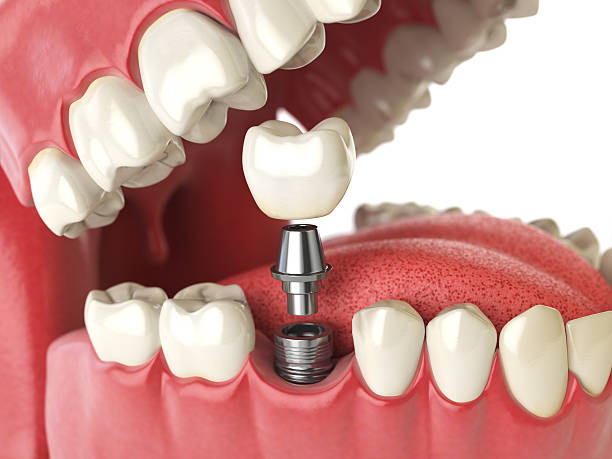Dental Implant




What is the Dental Implant?
A dental implant is a titanium post (similar to a tooth root) that is surgically inserted into the jawbone beneath the gum line, allowing your dentist to mount replacement teeth or a bridge there. An implant, unlike a denture, does not come loose. Dental implants also benefit general oral health because, unlike bridges, they do not need to be anchored to other teeth.
Dental implants are titanium-based metal cylinders that are surgically inserted into the jawbone where teeth are missing. Implants are used to replace missing tooth roots and to support single crowns, large bridges, and dentures. Modern technology allows these implant-supported replacement teeth to look, feel, and function like natural teeth. More information about Dental Implants can be found by clicking here.
A dental implant (also known as an endosseous implant or fixture) is a surgical component that interfaces with the jaw or skull bone to support a dental prosthesis such as to serve as an orthodontic anchor or as a crown, bridge, denture, or facial prosthesis. Modern dental implants are based on a biological process known as osseointegration, in which materials such as titanium form an intimate bond with the bone. The implant fixture is first placed to ensure that it will osseointegrate, and then a dental prosthetic is attached. Osseointegration takes a variable amount of time before either the dental prosthetic (a tooth, bridge, or denture) is attached to the implant or an abutment is placed to hold a dental prosthetic/crown.
The success or failure of implants is determined by the patient’s health, drugs that affect osseointegration, and the health of the tissues in the mouth. The amount of stress placed on the implant and fixture during normal operation is also assessed. Because biomechanical forces created during chewing can be significant, planning the position and number of implants is critical to the prosthetic’s long-term health. The position and angle of adjacent teeth, lab simulations, or computed tomography with CAD/CAM simulations and surgical guides called stents are used to determine the position of implants. Healthy bone and gingiva are required for the long-term success of osseointegrated dental implants. Pre-prosthetic procedures such as sinus lifts or gingival grafts are sometimes required to recreate ideal bone and gingiva after tooth extraction because both can atrophy.
The final prosthetic can be fixed, meaning that the denture or teeth cannot be removed, or removable, meaning that the prosthetic can be removed. In each case, an abutment is connected to the implant fixture. Lag screws or dental cement are used to secure the crown, bridge, or denture to the abutment where the prosthetic is fixed. A corresponding removable prosthetic is used where the prosthetic is removable.

